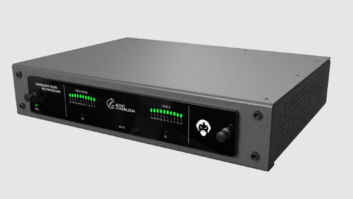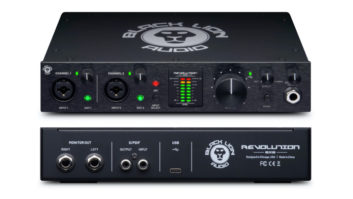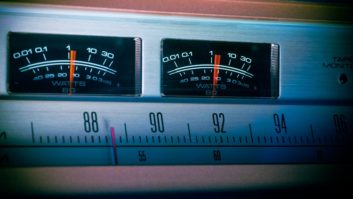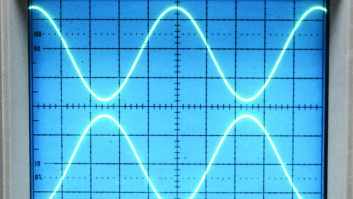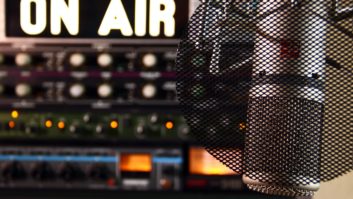Charles S. “Buc” Fitch, P.E., is always searching for great deals in electronics. MCM (www.mcmelectronics.com) is one of his favorite sources for the items they put on sale.

Fig. 1: The German-made amplifier “bricks” make a great utility audio amplifier.

Fig. 2: The power supply section of the amplifier project. Buc used a power transformer from a paging system.

Fig. 3: In the middle of this figure, note the unique “Buc heat sink” consisting of bolts, washers and hexagonal standoff. Buc just finished a custom 12-watt-per-channel stereo 2RU audio amplifier, based on the German-made KEMO 12-watt amplifier “bricks” seen in Fig. 1. The 12-watt bricks usually sell for $14.79 but were on sale for $5. MCM sells an 18-watt version for just under $15.
All told, Buc spent about $15 in new associated hardware; however, he was able to use up a lot of junk box parts — like the sexy fuse holder with the neon bulb in the cap, which lights when the fuse blows.
The performance of the unit is set by the manufacturer’s limits for the power bricks It is what it is, and the amplifier begins to distort at 12 watts. Surprisingly, the bricks have quite good gain, so Buc intends to run the pots at about 1/4 open with 0 dB monitor level into them.
The power transformer that Buc harvested from a paging system power supply has very low internal resistance, so the voltage drops very little under even full load. It can be seen in Fig. 2. Consequently the raw, filtered voltage is about 25 volts DC, meaning one can drop about 10 volts in the 15 V regulators.
Although good for a 1.5A, worst-case demand from each of these bricks is about 800 mA peak, the regulators run hot. For that reason, Buc installed one of those custom heat sinks on the heat rise side of each regulator, and after extended operation these got quite warm but not hot; see Fig. 3.
The heat sink is simple to construct. Buc used a couple of short bolts, washers and a hexagonal metal standoff.
Since the bricks are running at the upper end of voltage performance, Buc did not want the regulators to punch through and blow the bricks. Buc was motivated more by the hassle of changing the bricks than the cost, so as a precaution, he added 15-volt, 5-watt zener diodes on the output side of the regulators. If the voltage were to rise up to the supply rail of 25 volts, these zeners would clamp to 15 volts, and draw excessive current to ground and, in theory, blow the main fuse from overload. The zeners were added after the pictures were taken.

Fig. 4: Two LEDs, in the upper right corner, monitor condition of the regulators.

Fig 5: A rear view of the completed amplifier. Buc added a neat troubleshooting feature as well. Obviously, each brick has its own 15-volt regulator, and the twin LEDs on the front-panel mirrors these. If the LED doesn’t light, that section is dead. If the LED is overly bright, that regulator is in trouble. The LEDs can be seen in the upper right corner of Fig. 4, to the right of the fuse holder.
Buc notes a curious artifact of the brick design: the 15-volt DC supply is actually one leg of the speaker feed; therefore, the speakers have to float with neither side of the speaker lines attached or anywhere near a ground connection. The completed amplifier rear view is shown in Fig. 5.
***
And speaking of workbench parts, Duke Evans of KBBF(FM) wrote in to comment about the see-through, re-sealable plastic bags we told you about earlier. Art Reis had spotted these bags at Radio Shack and told us he found them helpful for storing small parts.
Duke finds that the bags do not have part numbers or descriptions on them — at least not at his local Radio Shack. This was a problem, because Duke was looking for a mini-fuse; there were four fuses in the bag but no indication of the amperage. He could learn the amperage by opening the bag, putting on heavy-duty reading glasses and deciphering the fine print.
Art’s point was that the resealing feature made the bags attractive for reuse to hold components, so be sure to identify them with a label in pen or permanent marker.
By the way, KBBF describes itself as the nation’s first bilingual public radio station in the United States. It serves 11 North Bay counties from Santa Rosa, Calif.
Send Workbench tips to [email protected]. Fax to (603) 472-4944.







